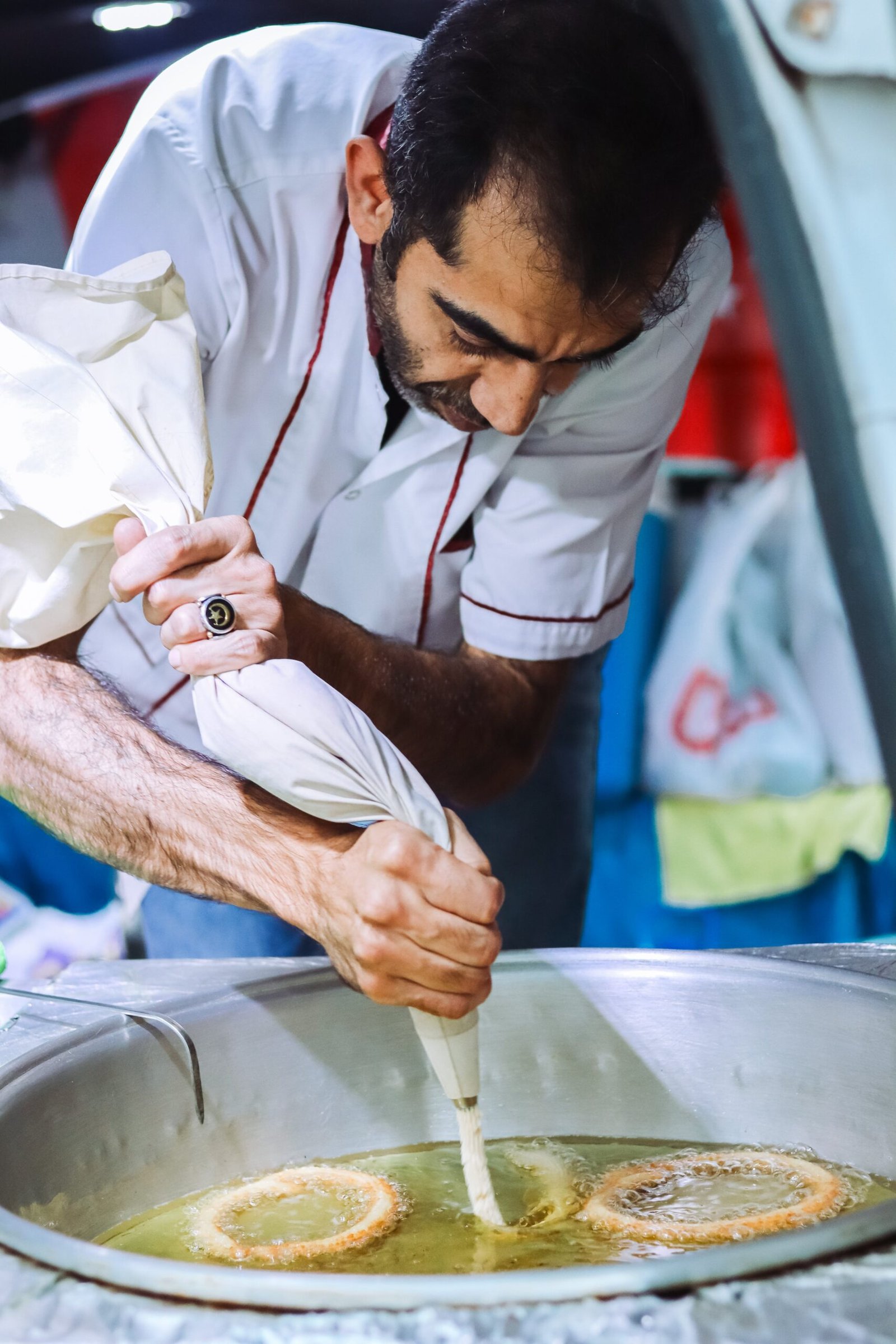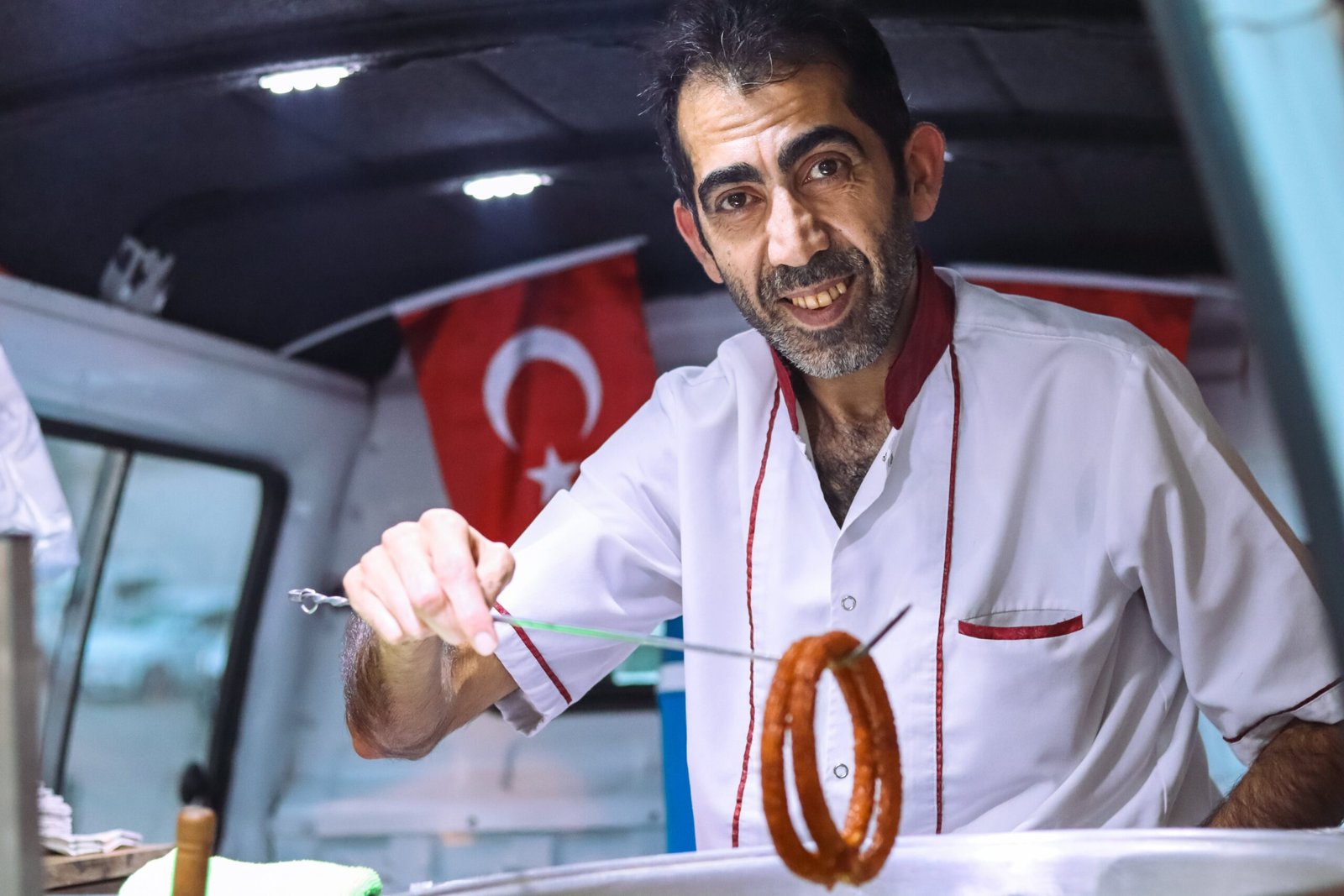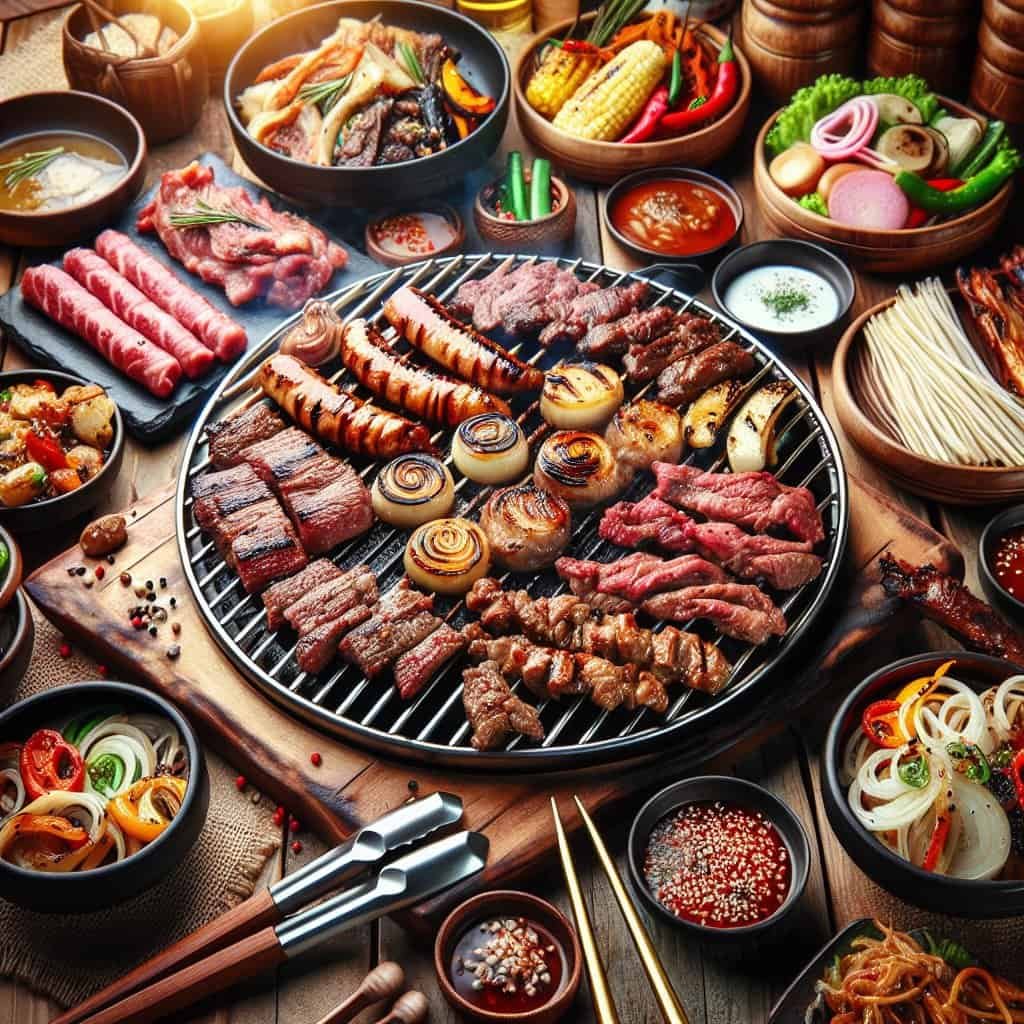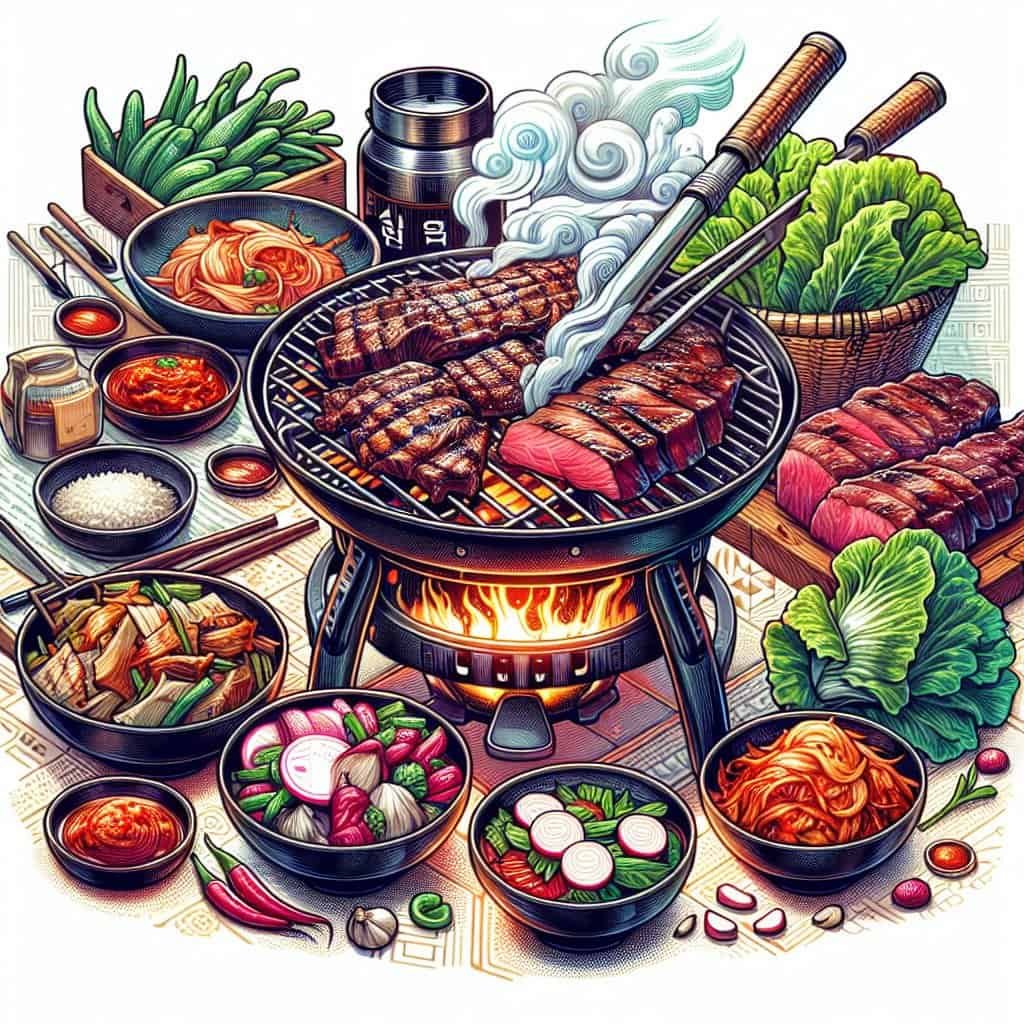Imagine being able to recreate the mouthwatering flavors and tantalizing aromas of Korean barbecue right in the comfort of your own home. With its sizzling meats, vibrant sauces, and unique cooking techniques, Korean barbecue has become a global sensation. But have you ever wondered if you could master the art of this culinary delight? Look no further, because this article is here to guide you through the secrets and techniques of creating the perfect Korean barbecue in your own kitchen. Get ready to impress your friends and family with your newfound grilling skills that will transport you straight to the streets of Seoul.

Choosing the Right Meats
When it comes to making perfect Korean barbecue at home, choosing the right meats is crucial. Look for high-quality cuts of beef, pork, and chicken that are well-marbled and tender. Opt for cuts such as ribeye, sirloin, or brisket, which are popular choices for Korean barbecue dishes.
Selecting the Highest Quality Cuts
When selecting meats for your Korean barbecue, be sure to look for cuts that are fresh and of the highest quality. Look for meats that have a vibrant color and are free from any off-putting odors. If possible, buy from a local butcher who sources their meat from reputable suppliers. This ensures that you are getting the freshest and highest quality cuts available.
Marinating for Flavor and Tenderness
Marinating your meats before grilling is an essential step in achieving the perfect Korean barbecue flavor and tenderness. Traditional Korean barbecue marinades typically include a combination of soy sauce, garlic, ginger, sesame oil, and sugar. Allow your meats to marinate for at least a few hours or overnight to allow the flavors to penetrate and tenderize the meat. Experiment with different marinades to find your favorite combination of flavors.
Preparing the Grill
Properly preparing your grill is essential to ensure that your Korean barbecue turns out perfectly cooked every time. Consider the type of grill you have, whether it be a gas grill or a charcoal grill, as each requires slightly different preparation methods.
Using the Right Type of Grill
While both gas and charcoal grills can be used to make Korean barbecue, many enthusiasts prefer charcoal grills for their ability to impart a smoky flavor to the meats. If you have a charcoal grill, make sure it is in good working condition and has a large enough cooking surface for your needs. Gas grills are convenient and easy to use, but may not provide the same smoky flavor.
Preheating and Cleaning the Grill
Before you start grilling, it is important to preheat your grill to ensure even cooking. For charcoal grills, light the charcoal and let it burn until it turns white and ashy. This usually takes about 20-30 minutes. For gas grills, preheat the grill on high for about 10-15 minutes. This allows the grates to heat up and prevents sticking.
It is also crucial to clean your grill before each use to prevent any leftover residue or flavors from transferring to your Korean barbecue. Use a grill brush to remove any leftover food particles and debris from the grates. This will help ensure that your meats cook evenly and maintain their delicious flavors.
Choosing the Best Charcoal
If you opt to use a charcoal grill, choosing the right type of charcoal is essential. Lump charcoal is a popular choice among Korean barbecue enthusiasts due to its ability to produce high heat and impart a smoky flavor. Avoid using briquettes, as they tend to produce more ash and can affect the flavor of your meats. Look for high-quality lump charcoal made from hardwood, such as oak or hickory, for the best results.
Setting up the Table
Creating the perfect Korean barbecue atmosphere involves not only the grill and meats but also the presentation and ambiance at the dining table. Setting up your table with the essential tools and utensils and creating a Korean barbecue atmosphere will enhance your dining experience.
Gathering the Essential Tools and Utensils
To create an authentic Korean barbecue experience at home, gather the essential tools and utensils. You will need a grill or hot plate, tongs for flipping the meats, scissors for cutting the meat into bite-sized pieces, and several pairs of chopsticks. Additionally, consider having several small bowls and plates for serving the side dishes and sauces.
Creating a Korean Barbecue Atmosphere
Transform your dining area into a Korean barbecue haven by adding some elements that create an authentic atmosphere. Use a portable grill or hot plate in the center of the table, allowing everyone to grill their own meats. Set the table with traditional Korean barbecue side dishes, such as kimchi, pickled vegetables, and rice. You can also decorate the table with Korean-inspired place mats, lanterns, and traditional tableware to complete the ambiance.
Side Dishes and Sauces
Korean barbecue is known for its variety of flavorful side dishes and dipping sauces. Preparing traditional Korean side dishes and choosing the perfect sauces to accompany your grilled meats will elevate your Korean barbecue experience.
Preparing Traditional Korean Side Dishes
Korean cuisine is rich in side dishes, or banchan, which are served alongside the main dishes. Some popular Korean barbecue side dishes include kimchi (fermented cabbage), namul (seasoned vegetables), and japchae (stir-fried glass noodles). These side dishes add a range of flavors and textures to your meal and complement the grilled meats perfectly. Consider exploring recipes and techniques for making these traditional Korean side dishes to truly enhance your Korean barbecue spread.
Choosing and Making the Perfect Sauces
Sauces are an integral part of any Korean barbecue experience. They add another layer of flavor to the grilled meats and offer a variety of options for customization. Some popular Korean barbecue sauces include ssamjang (a spicy and savory soybean paste), gochujang (a spicy red pepper paste), and sesame oil with salt and pepper. Consider experimenting with different sauce combinations and adjusting the flavors to your liking. You can also find pre-made Korean barbecue sauces at Asian grocery stores if you prefer convenience.

Grilling Techniques
Mastering the art of grilling is essential to achieving the perfect Korean barbecue. Whether you are using direct or indirect heat, knowing when to flip the meat, and achieving the optimal cooking time are all important factors in grilling your meats to perfection.
Mastering Direct and Indirect Heat
Understanding how to control the heat on your grill is key to achieving the desired level of doneness for your meats. Direct heat is when the meat is placed directly over the flame or heat source. This method is ideal for quickly searing meats and achieving a caramelized exterior. Indirect heat, on the other hand, involves placing the meat away from the flame or heat source and utilizing the residual heat to cook the meat slowly. This method is ideal for thicker cuts of meat that require longer cooking times.
Knowing When to Flip the Meat
Knowing when to flip the meat is crucial in grilling perfect Korean barbecue. Generally, it is recommended to flip the meat only once to maintain juiciness and prevent overcooking. Wait until the meat has formed a caramelized crust on one side before flipping. This usually takes about 2-3 minutes for thin cuts of meat and 4-5 minutes for thicker cuts. Use tongs to flip the meat gently, taking care not to pierce or squeeze the meat, which can cause the juices to escape.
Achieving the Optimal Cooking Time
Achieving the optimal cooking time for your meats ensures that they are cooked to perfection, with the right level of tenderness and doneness. Thinly sliced meats such as bulgogi or samgyupsal typically cook quickly and are best served medium-rare to medium. Thicker cuts of meat like brisket or galbi require longer cooking times and are often served medium to well-done. Use a meat thermometer to check the internal temperature of the meat, aiming for 145°F (63°C) for medium-rare or 160°F (71°C) for medium doneness.
Serving and Eating
Properly serving and eating Korean barbecue is an important part of the overall experience. Knowing how to cut and position the meat, wrap and roll in lettuce, and following Korean barbecue etiquette will enhance your enjoyment of the meal.
Properly Cutting and Positioning the Meat
When serving Korean barbecue, it is customary to cut the grilled meat into bite-sized pieces before serving. You can use scissors or a sharp knife to cut the meat into manageable portions. As for positioning, arrange the sliced meat neatly on a platter or directly on the grill for everyone to enjoy. This allows easy access to the meat and encourages a communal dining experience.
Wrapping and Rolling in Lettuce
One of the unique aspects of Korean barbecue is wrapping the grilled meat in lettuce leaves. This adds a refreshing and crunchy element to each bite. To assemble, take a lettuce leaf and place a piece of grilled meat on top. Add some side dishes and sauces to taste, then wrap it up like a small package. Pop the entire bundle into your mouth for a burst of flavors and textures.
Enjoying Korean Barbecue Etiquette
In Korean culture, there are some etiquette guidelines to follow when enjoying Korean barbecue. It is polite to wait for everyone to be served before eating, as it is considered rude to start eating first. Remember to pace yourself and eat slowly, as Korean barbecue is meant to be enjoyed over a leisurely meal. Additionally, it is common practice to refill each other’s drinks and engage in lively conversation while savoring the delicious food.

Vegetarian and Seafood Options
While Korean barbecue is primarily known for its meat dishes, there are also plenty of options for vegetarians and seafood lovers. Exploring tofu and mushroom varieties and grilling scallops, shrimp, and squid can provide delicious alternatives for those with dietary restrictions or preferences.
Exploring Tofu and Mushroom Varieties
Tofu and mushrooms are versatile ingredients that can be grilled to perfection and offer a meat-like texture and flavor. Look for firm tofu, such as tofu steaks or tofu pouches, that can withstand the heat of the grill without falling apart. Marinate the tofu in a Korean barbecue sauce for added flavor. As for mushrooms, varieties like portobello, shiitake, and oyster mushrooms work well on the grill. They can be marinated or simply brushed with some oil, salt, and pepper before grilling.
Grilling Scallops, Shrimp, and Squid
Seafood lovers can also enjoy Korean barbecue by grilling scallops, shrimp, and squid. Scallops and shrimp can be marinated and grilled quickly over direct heat until cooked through. They can be enjoyed as a main dish or added to lettuce wraps with the traditional side dishes and sauces. Squid, on the other hand, can be grilled whole or cut into rings. It cooks quickly and develops a delicious smoky flavor. Serve grilled seafood alongside your favorite Korean barbecue side dishes and enjoy a delectable seafood feast.
Pairing Korean Barbecue with Drinks
To complete your Korean barbecue experience, it is essential to choose the right beverage to accompany your meal. Whether you prefer alcoholic or non-alcoholic options, there are various choices that complement the flavors of Korean barbecue.
Choosing the Right Beverage
When selecting a beverage to pair with Korean barbecue, consider the flavors and spiciness of the grilled meats. Light and crisp options such as Korean rice wine, known as makgeolli, or a dry and effervescent beer like Korean soju or maekju often pair well with the smoky and savory flavors of Korean barbecue. If you prefer non-alcoholic options, consider refreshing drinks like iced barley tea or a sparkling fruit juice.
Korean Alcohol and Non-Alcoholic Options
Korean rice wine, or makgeolli, is a traditional Korean alcoholic beverage made from fermented rice. It has a slightly sweet and milky flavor, which complements the rich and savory flavors of Korean barbecue. Korean soju, a clear distilled liquor, is another popular option. It has a clean and crisp taste and pairs well with grilled meats. If you prefer non-alcoholic options, try iced barley tea, which is a refreshing and slightly nutty drink, or go for a sparkling fruit juice for a burst of fruity flavors.

Tips for Hosting a Korean Barbecue Party
Hosting a Korean barbecue party can be a fun and enjoyable experience. To make sure everything goes smoothly, it is important to plan the menu and quantity of food and create a DIY barbecue station for your guests to participate in the grilling process.
Planning the Menu and Quantity
When planning a Korean barbecue party, it is important to consider the variety of meats, side dishes, and sauces you will be serving. Offer a selection of different cuts of meat, such as beef, pork, and chicken, to cater to different preferences. The quantity of food will depend on the number of guests you have. Generally, plan for about 6-8 ounces (170-225 grams) of meat per person, along with a variety of side dishes, rice, and sauces.
Creating a DIY Barbecue Station
To get your guests involved and create an interactive experience, consider setting up a DIY barbecue station. Place a grill or hot plate in the center of the table and provide a variety of marinated meats, vegetables, and seafood for your guests to grill themselves. Set up a buffet-style spread with the side dishes, sauces, and condiments for everyone to customize their meals. This allows guests to grill their meats to their desired doneness and adds a fun element to the party.
Common Mistakes to Avoid
To ensure that your Korean barbecue turns out perfectly, there are some common mistakes to avoid. Overcrowding the grill, using the wrong marinades or sauces, and overcooking or undercooking the meat can greatly affect the outcome of your Korean barbecue.
Overcrowding the Grill
One common mistake when grilling Korean barbecue is overcrowding the grill. When there are too many meats on the grill at once, they can steam instead of searing, resulting in less flavorful and less tender meat. Make sure there is enough space between each piece of meat to allow for even heat distribution and proper caramelization.
Using the Wrong Marinades or Sauces
Using the wrong marinades or sauces can greatly affect the flavor of your Korean barbecue. While it is important to experiment and find your favorite combination of flavors, be mindful of using sauces that are too sweet or overpowering. Traditional Korean barbecue sauces strike a perfect balance of savory, sweet, and spicy flavors. Avoid using highly acidic marinades or thick sauces that can overpower the natural flavors of the meat.
Overcooking or Undercooking the Meat
Achieving the perfect level of doneness is crucial when grilling Korean barbecue. Overcooking the meat can result in dry and tough textures, while undercooking can lead to raw or unsafe meat. Use a meat thermometer to check the internal temperature and aim for the desired level of doneness. With practice and experience, you will be able to gauge the ideal cooking time for different cuts of meat.
By following these tips and techniques, you can become a master at making perfect Korean barbecue at home. Experiment with different cuts of meat, marinades, and sauces to find your favorite flavors. Whether you are hosting a Korean barbecue party or simply enjoying a meal with your loved ones, the art of Korean barbecue will surely delight your taste buds and create memorable dining experiences. So fire up that grill, gather your friends and family, and embark on a delicious journey into the world of Korean barbecue!

